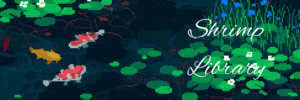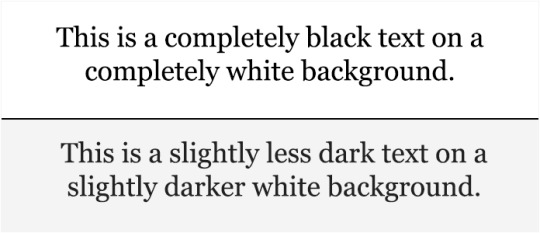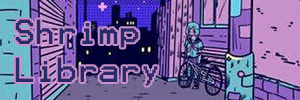Knowledge repository for women, by women. https://shrimp-library.neocities.org/
Don't wanna be here? Send us removal request.
Text
Something about semolina
Semolina is a name for coarsely milled durum wheat, and as such contains a lot of gluten. This food should not be consumed if you have a gluten intolerance, have an allergy to gluten, or are celiac.
Semolina (gris/griz/Grieß) is an amazing and versatile type of porridge, that is also very cheap and full of protein. It's been around for ages, and has fed many people from a very young age. This article will bring you lots of lazy ideas and recipes that really don't require much preparation, but will fill your stomach for very little money. The very first poverty recipe on this site, with hopefully many more to come.
The Price of Comfort
While mac'n'cheese hold the title of the comfort food, it is not the case in many countries, and it is not a very healthy option considering the amount of sodium it contains. Semolina, when prepared as will be discussed, is a warm meal that delivers childhood comfort nostalgia straight into your nervous system.
Semolina flour prices seem to vary a lot depending on the country, with the range being between 1 euro per 1 kilogram, to 10 dollars per 24oz, but considering how simple the recipe is and how little you will use for each meal, it's one of the cheapest things to buy in the long run. Definitely worth keeping it in stock for rainy days.
How to make it?
It is a poverty recipe, but also a depression recipe, due to it's simplicity. You have to eat, no matter what you're going through at the moment.
Pick your favourite bowl
Preferably with a lovely pattern or an animal on it. A bowl with pastel colours works well, too.
Pour milk into the bowl
The amount will depend on your appetite and the size of the bowl, and will be about the same as the finished product.
Take the bowl and pour out the milk into a pot that is on the stove
The heat should be medium, to prevent the milk from burning.
Leave the milk in the pot until it gets a little bit too warm for comfort
Check with your finger or have a taste with your spoon.
Once the milk is warm enough, mix in 1 or 2 spoons of semolina flour into the milk
Depending on the amount of milk, you can even go with 3 spoons if you wish to have a very thick meal.
Stand there and stir the mixture until it's thick
Use this time to contemplate your life and cringe at that silly thing you did 6 years ago.
That's literally it.
What about taste?
On it's own, semolina meal tastes quite neutral and bland, which lends to many options to making it actually good and heart-warming. Here are some ideas and variations!
Milk - taste will vary depending on it
Cow milk
Goat milk
Lactose-free milk
Oat milk
Almond milk
About anything that has milk properties, really
Add some flavour
Honey
Nutella
Cocoa powder
Wild berries
Nuts
Sugar
Vanilla sugar
Müsli
Corn flakes
Rice puffs
Granola mix
You can add almost anything to a semolina meal. Have fun and mix in your favourite things!
Last words
People across the world use semolina flour for all kinds of crazy meals, from sweet pancakes, cakes and cookies, to savoury tortillas. The recipe above is an easy one, for those rainy Sundays, or rainy weeks. You can eat it fresh from the stove, or leave it to cool down and have a more pudding-like consistency. Up to your preferences!
Hope you enjoy this lovely meal!

1 note
·
View note
Text
Online and Safe

True Crime genre sometimes deals with the aftermath of what could happen when dealing with stalkers. Often, too often in fact, women are simply not taken seriously when reporting a stalker to the authorities. Sadly, we cannot really count on them to protect us – they are effective at punishing an already done act, not so much at actually preventing it from happening. Restraining orders may help, but can you really count on them to scare away a dedicated stalker?
This article will try to illuminate the dangers of posting innocuous information, how to deal with an active case of cyber-stalking, and what you can do to protect yourself. In the end, it’s the one thing you have control over.
Stuff happens offline, too
Start with going through your already existing social media accounts and scrapping all photos of yourself and other people close to you. Do not worry! Facebook and Instagram both have features where you can download all of your old photos into a folder, so you don’t have to lose them forever – just keep them offline. Remove all tags from other people's photos, too.
It seems like a big hit at first, but does it actually matter if those photos are online? Don't let the good old "if it's not on FB, it didn't happen" get to you.
Best thing would be to completely delete those accounts all together, but if you're not all convinced about this, or you need certain social media accounts for your work or studies, you can always set them to private and be very picky of who you allow to see your information.
If you really want to post photos online for that dopamine rush you get when people "like" or "heart" them, do not post photos of yourself.
Do not post photos of inside your bedroom, do not post photos of inside your house, or your school or workplace. It's like giving a potential stalker a blueprint of places where you frequently go to, where you spend a lot of time, where you sleep and eat and relax (and let your guard down).

The meta of social media
Do not connect your phone number to any social media account. All your other accounts can be easily found once your phone number is revealed to the stalker, as well as your e-mail address. If a malicious third-party has your e-mail address, it's not that hard to get you locked out of your accounts and have your DMs read.
When it comes to social media accounts, avoid using your real name. Be as anonymous as you can be, and if a certain social media platform won’t let you do that, consider not joining it at all. When choosing a new username, make sure it’s not related to anything in your life.
Change your @ or username every now and then to keep them off your track, if the platform allows it. Keep separate and unrelated usernames for different platforms - be a Dandelion_Salad on Twitter, a Miniscule_Inconvenience on Reddit, just a random adjective in front of a random noun formula works great. Make sure there are no recognisable patterns in form of similar profile pictures, banners, bio descriptions, stuff like that. It's okay to keep things empty, too.
You cannot be “TorontoGirlie04”. You cannot be "NebraskanQueen99". You definitely cannot be "LadyThatLivesInThisParticularStreetBecauseItSoundsCool02".
You can, however, be “SnowGlobe23875728” or adopt a beloved character's name (any takers for "DipperGalaxy092930"?). Get creative and play around with the names, make a list of usernames you like, and use those instead.
EXIF is important
In case you didn't know, here's a little lesson on how uploading photos work, and how 4chan tracked down the guy who stood on salad in a Burger King. The key is in the EXIF data.
EXIF is short for Exchangeable Image File, and it basically stores all the information about the photo - exact location and time it was taken, at what aperture and shutter speed, if flash was used, basically everything. Most modern devices store this metadata within photos, and this is very easy to check.
The good news is that a lot of online hosting websites strap the EXIF data off the photos when they're uploaded to save space and bandwidth. The bad news is that not all of them do that, specially imageboards and forums.
But there are ways to circumvent it. The simplest way to scrap the EXIF data is to take a screenshot of the photo, and then uploading the screenshot instead of the original photo. This method should become a habit, as many platforms claim they don't store this information, but if they slip up, it will be an "oopsie" for them, and lots of headache for you.
Here is a link to EXIF Data Viewer to check for yourself. It can also be done within the settings of photos on phones. A good article on how to remove EXIF data on different devices and operating systems.
Please be careful with EXIF, as it can open a can of worms in the wrong hands.
Posting pictures of places you’re visiting should only be done after you’re not at the place anymore. Consistently posting your location in real time is not a very bright idea, specially if it’s from new places that are not familiar to you. Even famous people, who’s boundaries everyone tramples over and follows them around and somehow this is perfectly normalised, get really mad about their real-time location being posted for everyone to see.

"Social" in social media
Awareness of how social engineering works is of utmost importance. All the advice above is rendered useless if one is not careful enough and reveals the information unwittingly.
Making a post into the online nether to complain about the loud 90s music coming from a bar down the street from you seems quite innocent, until a person with bad intentions goes through your account’s history only to find a plethora of unrelated information about you that they can triangulate to find out almost everything about you. It rained heavily last Saturday and you couldn’t go see a really cool art exhibition in your city? You just gave a potential stalker valuable information.
That little voice in your head that makes you hesitate for a second before you blurt out your location should be absolutely listened to, don't drown it in self-gaslighting. We are basically socialised not to listen to our gut instinct, to give everyone the benefit of the doubt, until something bad happens, and then it's our fault for "allowing" it. Listen to your lizard brain, listen to your self-preservation instinct. It is very strong in women. You may be deemed a cold-hearted bitch, but at least you will keep your bodily autonomy.
Peer pressure is often where we falter. Find it in yourself not to fall for it, whether it's making an account on this new cool (and completely unsafe) "alternative" to Twitter, or sending nudes. Opinions of people you will not see after you graduate are temporary. Stalking can last for decades.
It's okay to lie about your gender online. No one really needs to know it, anyway. We're all ephemeral pixels on machines to each other. But posts and comments are online forever, and the more you talk about yourself, the more a stalker can piece together about your life. In that regard, avoid voluntarily giving information to provide context for your comment, ie "As 21f, I think...". It's usually useless info for people participating in the conversation, and it is absolutely invaluable to a stalker. Worse yet, it might even get people to start stalking you.
Do not use TikTok.
You will not "go viral". You will not "become TikTok famous". You will not "get sponsored".
All you do is post videos of yourself. In your room, in your school, in your workplace, in your favourite coffee shop. All the places you frequent, displayed freely for any prying eyes, and that might be taken away from you once the potential stalker decides to start reaching out from the shadows.
But I am a brand
Many ladies utilise social media to promote their creative work, and it's a great way to do so. Before you even start popping up on social media with your beautiful art, consider making a completely separate e-mail address. ProtonMail offers a great service. It takes a couple of minutes to set up, and you don't have to offer the blood of your firstborn to be allowed access. You can also create multiple accounts without any issues.
It doesn't really matter what your field is, whether it's making music, watercolour paintings, photography, or written word, you will want to create a closed circle with that e-mail (that is not connected to your real name). In other words, create your very own social media cosmos, where all the links only lead to the desired platforms of your own choice, and never to your personal pages. Your Carrd/Linktree only aggregate links to platforms where you've used the new e-mail to sign up. Make sure it's impenetrable and untraceable.
Do not use your personal e-mail address as a backup for your business e-mail. This is imperative!
Post only your creative stuff, never reveal any information about your person. Reblog, retweet, and like other people's stuff that you enjoy to fill up your pages, if content is your concern or you're in a creative lull. Do not fill it with pictures of your hand holding a Starbucks cup in front of a recognisable building. Definitely share memes, those are always great.
Turning it around
Now that we've covered most bases, here's a little goodie bag. Something sweet, that will feel oddly familiar to you, as with any woman, because we've been doing this for centuries amongst each other, but for very different reasons.
OSINT.
Open Source Intelligence. A simple name for all the information that is made publicly available, and the very reason why cyber stalking is not taken quite seriously. Actually hacking into accounts is a threshold for many stalkers, and is considered an escalation, because they simply operate on and collect information that their victims share publicly. As stated previously, the victim gives out the information sporadically, and it's seemingly unrelated to themselves, until the stalker goes down the history of the victim's account and puts all the puzzle pieces together.
Simply knowing and collecting information about a person, who decided to share it online for everyone to see, is not a bad thing in itself. It all depends on the intentions behind such collection of information, and what is the purpose of it. Finding out through the interwebs that your long-term boyfriend is married and has kids with another woman because you found their happy family pictures on her Instagram page is basically OSINT. Tracking a person's movements and finding out their place of residence to "keep an eye on them" is basically OSINT.
Since OSINT is simply finding and collecting public data, it is not inherently wrong. It's just data.
Here are some tools that people use. Check yourself. You might be surprised.
GitHub repository called UserRecon, which is a script that scraps the web to figure out where a certain username or e-mail has been used to make an account on various platforms.
OSINT Framework was made to scour the internet, on any platform you can imagine, and find any public information you might need. Open it up and see for yourself just how vast this is, and how easy it is.
My password is...
Surely you've been put into a situation where someone pressured you to share your password with them, whether it's for your e-mail or social media or Snapchat or whatever. Perhaps you've been made to change your password to "Ilovemybf" or something cheesy, without really realising that this gives them access to your accounts.
Here's a list of most commonly used passwords that have been scraped from the internet. All the leaked passwords are in there, and it's fairly easy to automate the process to "guess" your password just using this particular list. The list cannot be named because of doxxing potential, but it currently holds 14 344 391 most common passwords, and it is regularly updated.
These resources can be used to turn things around on to your stalker, if you have an active one right now. You can also check your digital footprint and see how well you've covered your tracks.
Most importantly, do not share your passwords and e-mail with anyone. You might as well kiss goodbye your accounts if you do that. People can be volatile and unpredictable, and no matter how much you trust them in the moment, do not give them the key to turn your whole life upside down if something goes wrong. And something always goes wrong.
Be safe. Be mindful of your privacy. Don't give it for free.

22 notes
·
View notes
Text
The CV Guide for Girlies
Disclaimer: Most of the advice does not apply for ATS scanners. Still don't know how those work.

Let's say you've just been laid off unexpectedly, or you finally decided to put an end to your comfy NEET days, and you need a piece of digital paper to show someone because you wish to get paid. It's so overwhelming, where do you even begin? Well, you're in the right place, because this article right here is all you need to make a CV and actually land a job.
Before we start, there is a difference between a CV and a résumé. Curriculum Vitae (CV) is basically a your entire life, all your achievements, certificates, degrees, experience, all of it compiled together, while a résumé is a quick rundown of relevant information for the job you want. This is all completely irrelevant, because no one says résumé anymore, and no one except academia will expect your entire life course so far, but for the sake of brevity, the term CV will be used from now on.
Describe yourself in a thousand words
Firstly, sit down and write your academic achievements and all the work experience you have, in a single document. Try to be as detailed as possible. Mention everything, from fetching coffee for your slightly misogynistic boss to taking photos of university events. Anything that comes to your mind, just jot it down. Much like a lot of aspects of a job, it's easier to remove unnecessary fluff than to add it on the spot.
Next step is to translate your plebeian plainspeak to corporatese. You didn't stand in queue for 20 mins because your boss forgot his morning cuppa, you procured vital resources to ensure the team's success. You didn't just post some selfies from that boring conference, you created content to help boost the popularity of X university. It's mindboggling why humans have to communicate to each other in this way, but we live in a society.
Put aside that document for now, and browse jobs that are sort of within your expertise. As an example, we will be pretend that your desired position is that of Administrative Assistant, because it's a broad term that means literally anything and your dear author is not nearly as creative as HR. Administrative jobs can include the very general Assistant, Receptionist, AccountantLite, you name it. Then it branches off to specific establishments, like offices, hotels, spas, etc. It is all similar, but not quite the same, like how synonyms work in the English language.
Now we go back to your original document. Separate the experience you have based on the jobs you've scoured. There are customer-facing jobs, like a Hotel Receptionist, that also force you to deal with money and guest reservations, which is quite different than having to deal with social shenanigans in an office environment. Keep the original document intact, and create new documents for this step.
Designing yourself in a one-page document
Alright, the most daunting part is done. Good job! Pat yourself on the back, and follow this link to Canva, type "CV" into the search bar, and window shop for the one you like the most. Highly recommend these new sleek and modern ones, they are comfortable to look at for more than two seconds and people in HR won't discard them immediately. Choose a template or make your own from scratch, but keep in mind that people actually still use printers and will print out your application, so the contrast between the background color and the font color has to be high enough. Can't fail with a black-on-white approach, though a slightly darker white (#F4F4F4) and a slightly lighter black (#212121) work great and don't strain our eyes as much as the tried-and-true does.

Eye strain happens because of how our iris contracts with a lot of light being received, which is not a hard task for these miracles of nature, but then having to look at and actually read black words is a little bit hard for them. Absolutely demolished by simple text.
Pro tip: One page of CV = 10 years, or less, of experience. Do NOT go over one page. Make it fit.
The reason for the One Page Rule is simply because attention span of a person who is looking at potentially hundreds of CVs in a day is limited, and their patience might be thin. If a CV is unreadable, or looks absolutely horrible to read at first glance, it will be discarded. The point of a CV is to get an interview, not to get a job immediately. You want them to look at your pixels, actually read them, and give you a call.
There are a few good rules to keep in mind when designing a CV.
Make sure your name is clear, bold, and visible, in upper left corner or in the middle of the document.
Your future employers won't remember the exact details, but they will jot down your name as a potential new recruit. It should be visible, even from a thumbnail.
Contact information should be separated into a different "box", and should include phone number and e-mail address.
In case they wish to contact you, do not make them look for your information for more than a second, they will not bother with that. Adding a home address depends on where you are from, and the kind of job you want. If you are only looking for remote work, home address is not needed, but adding your address nowadays is usually redundant. Better to keep your sensitive information to yourself if you can, as you never know who's watching.
Bullet points are a great way to summarise previous experience, and they never end in a full stop.
Attention to detail and knowledge of proper text formatting etiquette is imperative in a lot of jobs nowadays. Show them you know what you're doing right off the bat with your wonderful CV. In case you are adding slashes (/), there should be space before and after the slash if there are two or more words on each side.
Example:
Peaches/Bananas
Ripe peaches / Spotty bananas
The order of all points should be in reverse chronological order, so the first point should be the most recent work experience or academic achievement, then go down the list with the second, third, and so on.
Font choice is extremely important.
Sans-serif basically means 'no decoration', and is generally perceived as friendlier and more relatable, but is often also more readable (which is why we're using it for this website).
'Serif' fonts have tiny little decorative ends to each letter, and are seen as more formal and professional.
The best design choice is to combine both font categories. Use 'serif' for job titles you've previously held, and the additional information about them, like the company you worked at and the time that you spent there (with the time span being in italics so it doesn't look too uniform and stands out). The bullet points should be in a 'sans-serif' font of your choice, as they usually mean more text, so it's easier to read.
There are many font families to choose from, and most people default to Times New Roman for 'serif', and Arial for 'sans-serif'. Switch it up a bit, and use Garamond instead of TNR, and Calibri instead of Arial. It's the little things that matter the most, and you want to stand out among the crowd, so min-maxxing like this is a good idea.
Keywords should be found, and they should be bold.
First impressions are everything, as often times, the only chance you'll get is a quick glance, unless you pull them in. Words that are bold seem more important, and people will look at them before anything else, so use the bold to highlight the things you want them to look at. A good trick is to bold up the keywords that the employer used in the job description. They mentioned one of the responsibilities is scheduling office meetings? You bold that stuff right up in your CV.
Finding the keywords in job descriptions is basically the same game as bolding them in your CV. There's a lot of corporatese fluff they use in these descriptions, same as we have to, so it's a tug of war from both sides to figure out what the hell everyone's talking about. Here's an example of the first job that popped up on Indeed!

This is a highly effective method, because it works in real life as well. Mirroring gestures and repeating back slightly different words to people we're talking to makes them subconsciously kinda like us. They think we're cool, because they usually think they themselves are cool. Also, it makes sense that if an employer is looking for these specific things, you'll want to mimic them to get a call back. You want them to look at your CV and say "Yes, this is exactly who we need!". It really is that simple, though it will take a little bit more time upfront, but it pays off in the long run. Rather spend 10 minutes on this, than send out hundreds of applications with no results.
Most jobs within a field have very similar responsibilities, perhaps just worded a bit differently. Create a few different versions of your CV to apply to these slightly different jobs.
An important note to all the above is to keep an eye out for any big names. HR loves knowledge of industry-standard software, so if you are proficient in MS Excel (god bless), you put that in and you bold it. Same goes with numbers. Any "increases in volume", or "saved the company X amount of money through this unique special trick of knowing what you're doing", and they will drool at your CV. Big name software and actual quantifiable numbers should always be included and always be bold.
FAQ
Should I use a photo of myself?
Probably not. There are a thousand different biases that people have, and you want to avoid that like the plague. You might be too blonde, too brunette, too skinny, too pretty, too . A photo catches immediate attention, and you don't want them to be looking at you, you want them to look at your words.
I don't have any work experience, what do?
First of all, do not lie outright. If you went through university/college, did you organise any study groups? Did you write any articles for the school's newspaper, or publish any killer essays? Were you a cheerleader? A leader of a book club? Include that. Fluff it up. You probably did something, even if it's having awesome grades. Include professor references, too!
I'm not sure if I should apply to this job.
Apply to literally any job that you feel you can do. On average, women seem to be very shy in applying for jobs they are not at least 90% qualified for, while men don't seem to overthink as we do and just apply to anything that resembles a job description. The worst that can happen is be ignored. Enjoy the rush of euphoria as you hit that Send button!
I'm an American and we are prompted to disclose our very personal information that is usually illegal in other countries.
Disclosing your religion, sexuality, and race can be a double-edged sword. There are many diversity quotas that companies are dying to fill, but if you're unsure about sharing this information, do some stalking of the company's website. They usually have a page dedicated to all their employees, and if you notice a staggering lack of women in there, it actually might be a good idea to apply. Women often offer unique perspectives to problem-solving that men just don't even think about until it's too late. If the company's website mentions any of the new buzzwords, you may fluff up your personality a bit, but make sure the info you provide is not verifiable or outright questionable. You want to go for plausible deniability.
I have large time gaps between jobs.
That is nothing to fret about, unless you're applying for some high-rolling intense corpo job we see in movies. One way to minimise the initial impact of the gaps is to only state the month and the year you spent at a job (August 2019 - March 2020). When you land an interview, and they ask about it, you have three options.
Option A
Claim family issues. People are generally more lenient about this when it comes to women, which might seem like a cool life perk until you realise they are lenient because women are expected to take care of family members. This option also allows for mental health breaks from working, and you wouldn't technically be lying because you are someone's family.
Option B
Claim travel. If you claim you went abroad to volunteer at animal shelters for a year, they will ask you why haven't you put that down in the CV, and that is just an awkward situation. But, if you claim you went abroad or to another state to protest against testing on animals because you feel strongly about the cause, they might even be impressed by your passion. Travelling to see family abroad also works. Make sure your social media accounts are private.
Option C
Claim NDA. The very nature of Non-Disclosure Agreements is that you cannot talk about whatever you did. Can't put it in CV, can't talk about it, that's that. This option requires very good lying skills and a good delivery. If they stay silent after your claim to try to get you to talk, do NOT break the silence. Stare into their soul and wait until they break first.
If you are still worried about the gaps, you can try to fill those with completed certificates and courses that are somewhat related to your field and will help you in the long run.
This is already very long, so take all of this advice, create some gorgeous CVs, and go get that bread.
You can do it!

6 notes
·
View notes